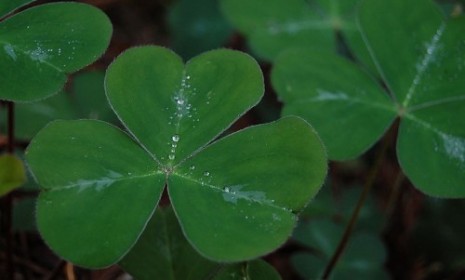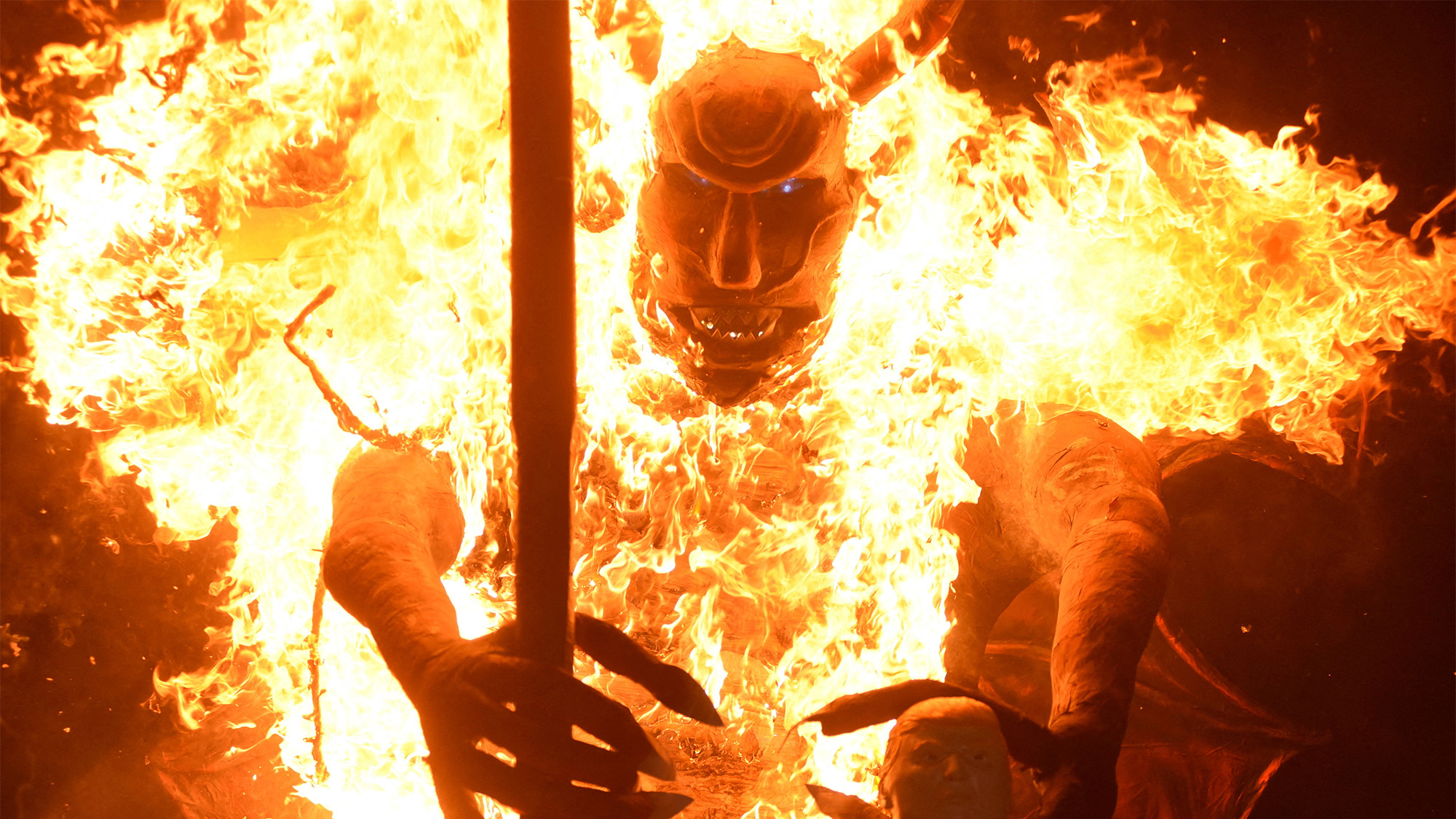The great shamrock shortage of 2010
Habitat loss and a cold winter have taken a hard toll on Ireland's national plant. Is 'the wearing of the green' on St. Patrick's Day in jeopardy?

Ireland is suffering from a "severe shamrock shortage" this year, say local botanists. What's behind the new scarcity of Ireland's national plant, and how might traditionally minded St. Patrick's Day revelers—who favor a shamrock pinned to the lapel—be affected? Here, an instant guide to the great shamrock shortage of 2010:
What's a shamrock, anyway?
The shamrock is a specific variety of three-leaf clover, Trifolium dubium. While strongly associated with Ireland, it actually grows throughout the British Isles and northwest Europe.
The Week
Escape your echo chamber. Get the facts behind the news, plus analysis from multiple perspectives.

Sign up for The Week's Free Newsletters
From our morning news briefing to a weekly Good News Newsletter, get the best of The Week delivered directly to your inbox.
From our morning news briefing to a weekly Good News Newsletter, get the best of The Week delivered directly to your inbox.
Why does the shamrock have to do with St. Patty's Day?
In A.D. 400, St. Patrick used the shamrock to explain the concept of the Holy Trinity—Father, Son, and Holy Spirit—while converting the druidic Irish to Christianity.
Why is there a shortage in Ireland this year?
It's the result of a one-two punch, scientists say: Development and agriculture have gobbled up much of the plant's native habitat in Ireland's "unimproved grasslands," while a brutally cold local winter has stunted the growth of the remaining shamrock.
A free daily email with the biggest news stories of the day – and the best features from TheWeek.com
Will the shortage crimp St. Patrick's Day celebrations?
Not really—revelers can easily switch to such look-alike plants as white clover (Trifolium repens) or black medic (Medicago lupulina). These "bogus shamrock plants" have a wider native habitat and are still abundantly available.
Will Americans be affected?
Unless they're searching for shamrocks sourced directly from the Ireland, Americans can rest easy. And, fortunately, the Irish-grown stock is sufficient to meet the needs of Irish Prime Minister Brian Cowen, who will be presenting Obama with a bowlful of shamrock cuttings at the White House St. Patty's ceremony.
Sources: Irish Central, Irish Times, About.com Landscaping, Catholic Online, National Geographic
-
 The week’s best photos
The week’s best photosIn Pictures A man's best friend, the elephants in the room, and more
-
 A TikTok trend has Gen Z men leaving streetwear behind for more preppy attire
A TikTok trend has Gen Z men leaving streetwear behind for more preppy attireThe Explainer More than a zipper: Young Black men embrace the ‘quarter-zip movement‘
-
 Codeword: December 12, 2025
Codeword: December 12, 2025The daily codeword puzzle from The Week